Nintendo Labo review: Fun and games with cardboard
Nintendo (NTDOY) is riding a hot hand thanks to the wild success of its Switch console and games like “The Legend of Zelda: Breath of the Wild,” “Super Mario Odyssey,” and “Splatoon 2.”
But for its latest trick, the quirky company is doing something completely different: selling cardboard toys in the age of the iPhone in the form of its new Nintendo Labo kits.
It sounds silly, but Labo is inventive, fun, and … educational. See, while most cardboard is used to pack away high school trophies and jeans you swear you’ll eventually fit into again — it’s not happening, Craig — Labo lets you build what Nintendo calls Toy-Con projects, cardboard versions of objects ranging from a working piano to a robot suit.
Starting at $69 for the Toy-Con Variety Kit and $79 for the Toy-Con Robot Kit — plus, you know, the cost of a Switch console — Nintendo Labo is every bit as imaginative as the games that made the company a household name.
Yes, it’s really cardboard
Open the Toy-Con Variety Kit and you’ll find a single game cartridge, a bag of stickers and rubber bands and a thick stack of cardboard. Those supplies are everything you need to complete the Kit’s five Toy-Con projects: the Toy-Con Fishing Rod, Toy-Con House, Toy-Con Piano, Toy-Con Motor Bike and two Toy-Con RC Cars. That’s it. No glue, no tape, no nothing. Pieces simply fold and fit together.
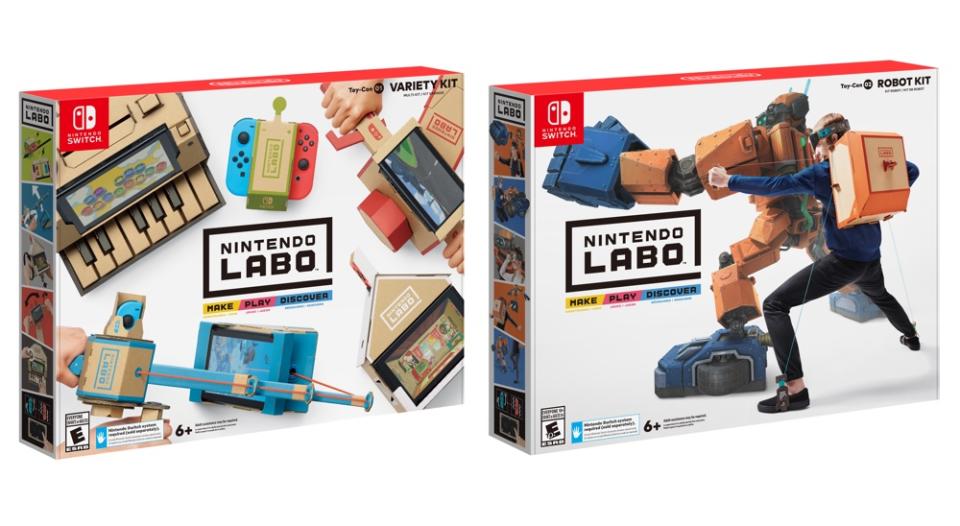
I first set out to build the Toy-Con Fishing Rod, because I like to bite off more than I can chew, and thought it seemed like the most productive way to spend a Friday night. Before you can start popping the perforated shapes out of the Kit’s cardboard sheets, though, you need to view the instructions using the Labo app on your Switch.
Not only does the app tell you which pieces to use for each step of the building process, ensuring you don’t end up with a floor covered in cardboard, it also includes a video detailing how to properly assemble each segment complete with a wisecracking narrator. What’s more, the videos are fully interactive, so you can rotate each scene to see it from every possible angle. Not quite sure if you folded a piece the right way? Just rewind the video, and swipe to get a better look.
Fishing without the water
Once you’ve finishing building your Toy-Con you can start playing. The fishing rod, as you might expect, lets you fish using a cardboard rod and a small box that holds the Switch’s display portion. Disconnecting the Joy-Con controllers and placing them into the rod’s handle and reel adds motion sensing and vibration to the rod. A long orange string connects the pole and Switch mount, providing tension using a rubber band that unspools and respools the line, making it feel like you’re actually tugging on a fish.
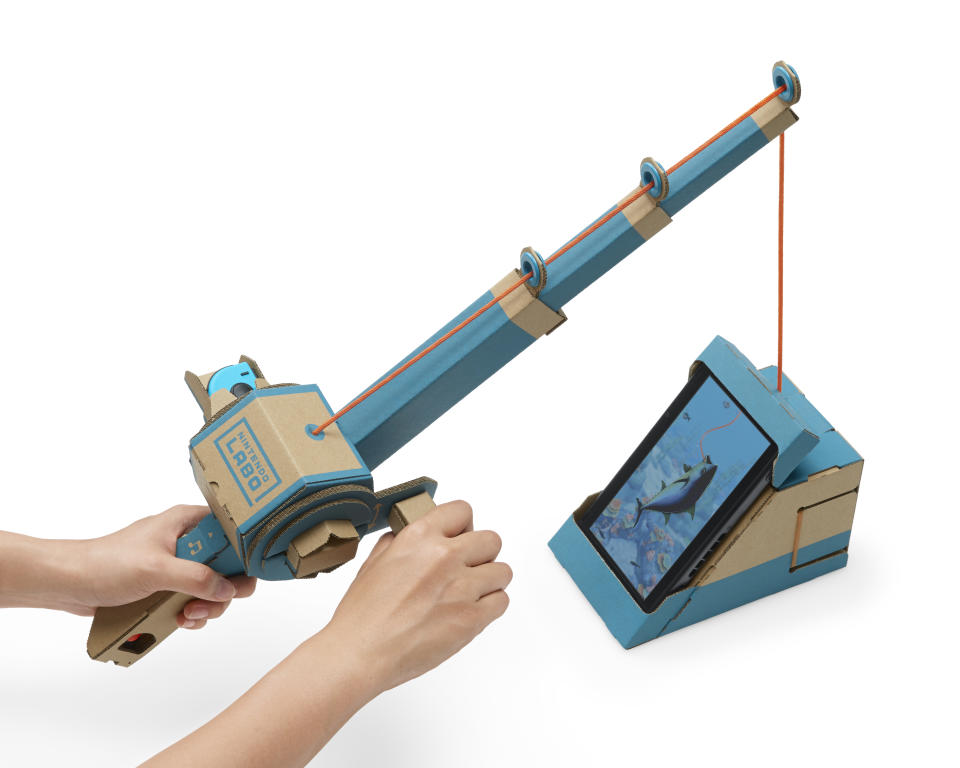
The Joy-Cons even track where the string should be on the Switch’s display. So if you move the line to the right, the on-screen line will also move to the right. It’s truly strange watching the virtual and real worlds seemingly interact in real time.
Tickling the cardboard ivories
In addition to the Toy-Con Fishing Rod, I also built the most difficult of the Toy-Cons: the piano. At four hours, with a break here and there to pull my kitten away from the cardboard he so desperately wanted to shred, the Toy-Con Piano was complete. Popping out the pieces and folding them properly wasn’t any different from the fishing rod.
What was different was the number of small white stickers I needed to attach to the various piano keys and knobs. The stickers are vitally important to the setup, as the infrared camera on the end of the Joy-Con you plug into the piano’s rear reads them and tell the Switch which note to play. Each time you press a key, it springs up just high enough above a bar inside the piano for the camera to see. It then translates the position of that sticker into a specific note. It’s an impressive use of the Joy-Con.
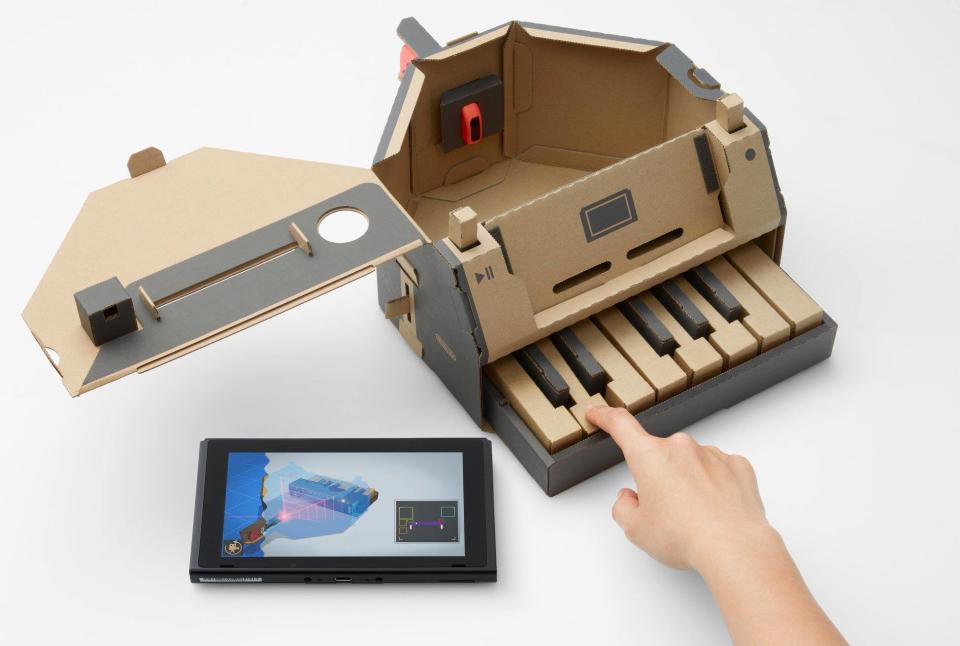
Even more ridiculous is the Toy-Con Robot, which includes a backpack connected to hand and foot grips (that track your movement), a series of strings, a Joy-Con and more white stickers. A second Joy-Con sits in the robot kit’s headset. The entire setup lets you control a massive on-screen robot in the Labo Switch app. Take a step with your left foot and move your right arm, and the robot’s left foot and right arms will move in sync with your own.
You can even duck down and transform the robot into a tank, or spread your arms and make the robot take flight. Of course, all of this will undoubtedly make you look, well, like you’re wearing a bunch of cardboard.
Who’s it for?
I enjoyed building and using the Toy-Con Variety Kit, but it might not hold adult gamers’ attention for too long. It’s more for the younger “Minecraft”-obsessed gamer who wants to build and play at the same time.
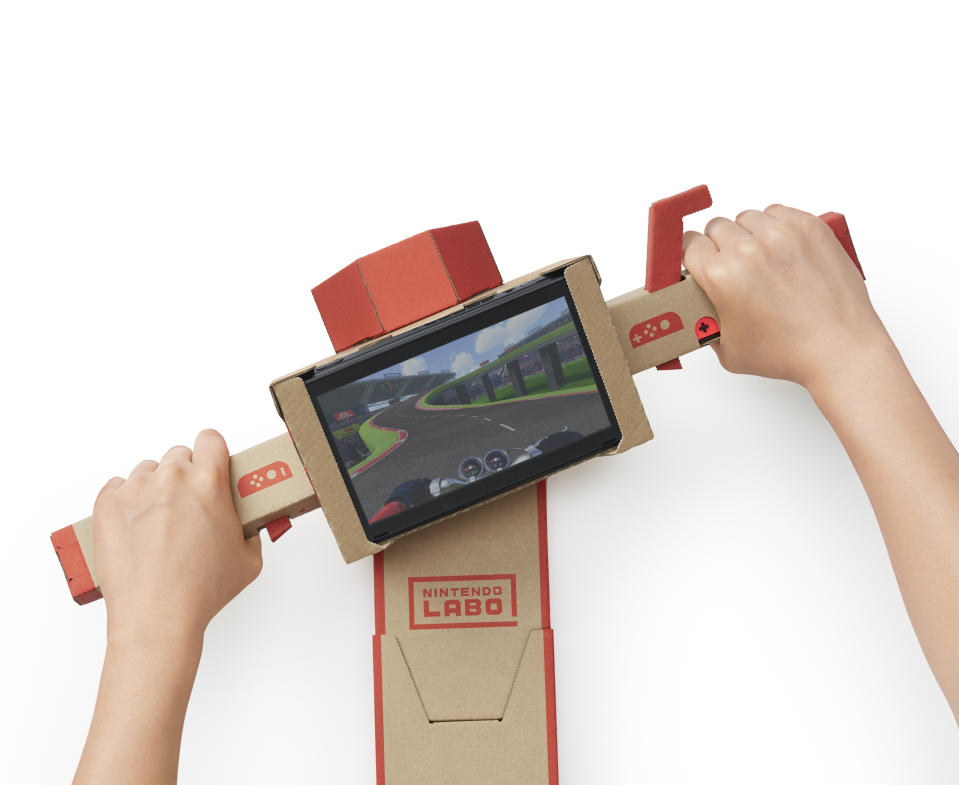
And that’s good, because Labo includes an educational element in the form of the Toy-Con Garage, a somewhat hidden part of the Labo app that allows you to essentially program your own uses for the Toy-Cons. You can, for example, make an electric guitar, or an on-screen piano or a space gun. It’s up to you.
To program these items, you simply select the kind of input you want to use, a tap for instance, and the output, a specific musical note. Once you connect the two, your tap will translate to a note. It’s all easy and straightforward and is sure to appeal to children and teens who are into building and creating their own tech toys.
Labo will even show you how the Joy-Con’s camera reads the Toy-Con’s stickers to elicit a specific action.
Should you get it?
Nintendo’s Labo marries the simplicity of cardboard with high-tech sensors to create something truly wonderful. Constructing each Toy-Con project is as relaxing as building a Lego set, while the Labo software makes each kit unique and entertaining onto itself. The addition of the ability to craft your own Toy-Con Garage programs only adds to Labo’s staying power.
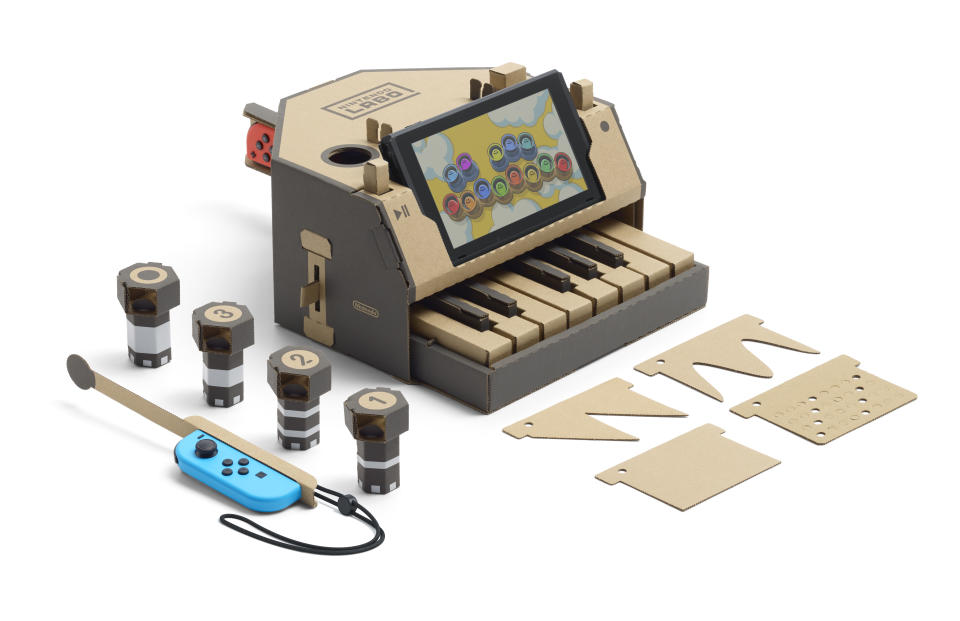
If you know a Switch fan looking for more to do with the console, then Nintendo Labo is a wonderful choice, especially if they’re already interested in building. Now I’m going to learn to play Beethoven on my new Piano.
More from Dan:
‘Kirby Star Allies’ review: How to make friends and eat them
Despite Trump’s meeting, video games and violence still don’t add up
Email Daniel Howley at [email protected]; follow him on Twitter at @DanielHowley.
Follow Yahoo Finance on Facebook, Twitter, Instagram, and LinkedIn
